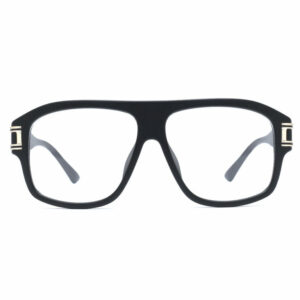Introduction:
In society, there is a misconception that wearing eyeglasses can cause bulging eyes. This belief leads some individuals to avoid wearing glasses altogether or limit their usage to specific situations. However, it is crucial to understand the truth behind this notion. This comprehensive guide aims to debunk the myth surrounding bulging eyes, shed light on the role of myopia, provide insights into choosing the right eyeglasses, offer precautions for wearing them, and emphasize the importance of good eye habits.
-
Myopia as the Root Cause of Bulging Eyes:
Contrary to popular belief, wearing glasses does not directly result in bulging eyes. The primary cause of bulging eyes is myopia, which involves the elongation of the eye axis. Axial myopia, the most common type, occurs when the eye axis grows rapidly. During a child’s growth, the eye axis follows a pattern similar to their height, transitioning from hyperopia (farsightedness) to orthopia (normal vision). However, if the eye axis grows too quickly, myopia can develop. The lengthening of the eye axis is what leads to bulging eyes, and it is unrelated to wearing glasses.

Glasses correct vision by changing the concentration and dispersion of light. Myopic glasses, specifically concave lenses, allow light to diverge before reaching the retina, ensuring clear vision. However, due to the optical properties of concave lenses, objects appear smaller as myopia increases. This might give the impression that the eyes of someone wearing myopic glasses are smaller and distorted. In reality, properly prescribed glasses not only correct vision but also help modify certain eye and facial defects. Avoiding glasses when experiencing myopia can lead to visual fatigue and potential complications, such as increased myopia progression or strabismus. It is crucial for individuals, especially children, to undergo standardized examinations and obtain scientifically fitted glasses from reputable medical institutions.
-
Choosing the Right Glasses for Bulging Eyes:
While frame glasses are a conventional solution for correcting refractive errors, selecting the appropriate glasses requires careful consideration. Optimal eyeglasses selection encompasses optical, aesthetic, and mechanical factors. Accurate optometry forms the foundation of a suitable prescription. Additionally, attention should be given to the frame’s fit, ensuring compatibility between the bridge and the nose, as well as the temples and the shape of the ears. Lastly, lenses must be precisely shaped, aligning the optical center with the center of the pupil. Neglecting to match the pupil distance and height may result in visual fatigue and the production of prismatic effects.
-
Precautions for Wearing Glasses and Managing Bulging Eyes:
a. Adhering to Prescription Duration: It is essential to follow the doctor’s recommended duration for wearing eyeglasses. Medical professionals determine the type of eyewear and the appropriate wearing schedule based on refractive errors, individual eye needs, and visual function. Experts generally recommend individuals who need eyeglasses to use them regularly and consistently. It is crucial to avoid using glasses that belong to others or wearing deformed glasses.
b. Protecting Your Glasses: When putting on or removing glasses, it is advisable to use both hands and maintain a parallel direction along both sides of the face. Using only one hand may disrupt the balance of the frame and result in deformation. Storing glasses with the lenses facing upwards or placing them in a protective case helps prevent lens wear. Direct exposure to sunlight in a car should be avoided, and it is recommended to wash the lenses with water regularly. Additionally, periodic visits to professional optometric centers for maintenance and adjustment are highly recommended after obtaining glasses.

c. Regular Vision Check-ups: Children, adolescents, and adults should undergo regular vision check-ups to monitor their visual condition. Children and adolescents need visual system reviews every 3-6 months due to their developmental stage. Adults should have check-ups every six months. In cases of lens wear and tear or changes in prescription, refitting becomes necessary.
-
Cultivating Good Eye Habits for Bulging Eyes:
In addition to wearing eyewear, prevention and management of myopia involve developing healthy eye habits. Children and adolescents, regardless of their current vision status, should engage in outdoor activities, limit prolonged near-range eye usage, and maintain proper writing posture.
conclusion
In conclusion, understanding myopia, proper glasses usage, and good eye habits are vital for long-term eye health and preventing bulging eyes.



